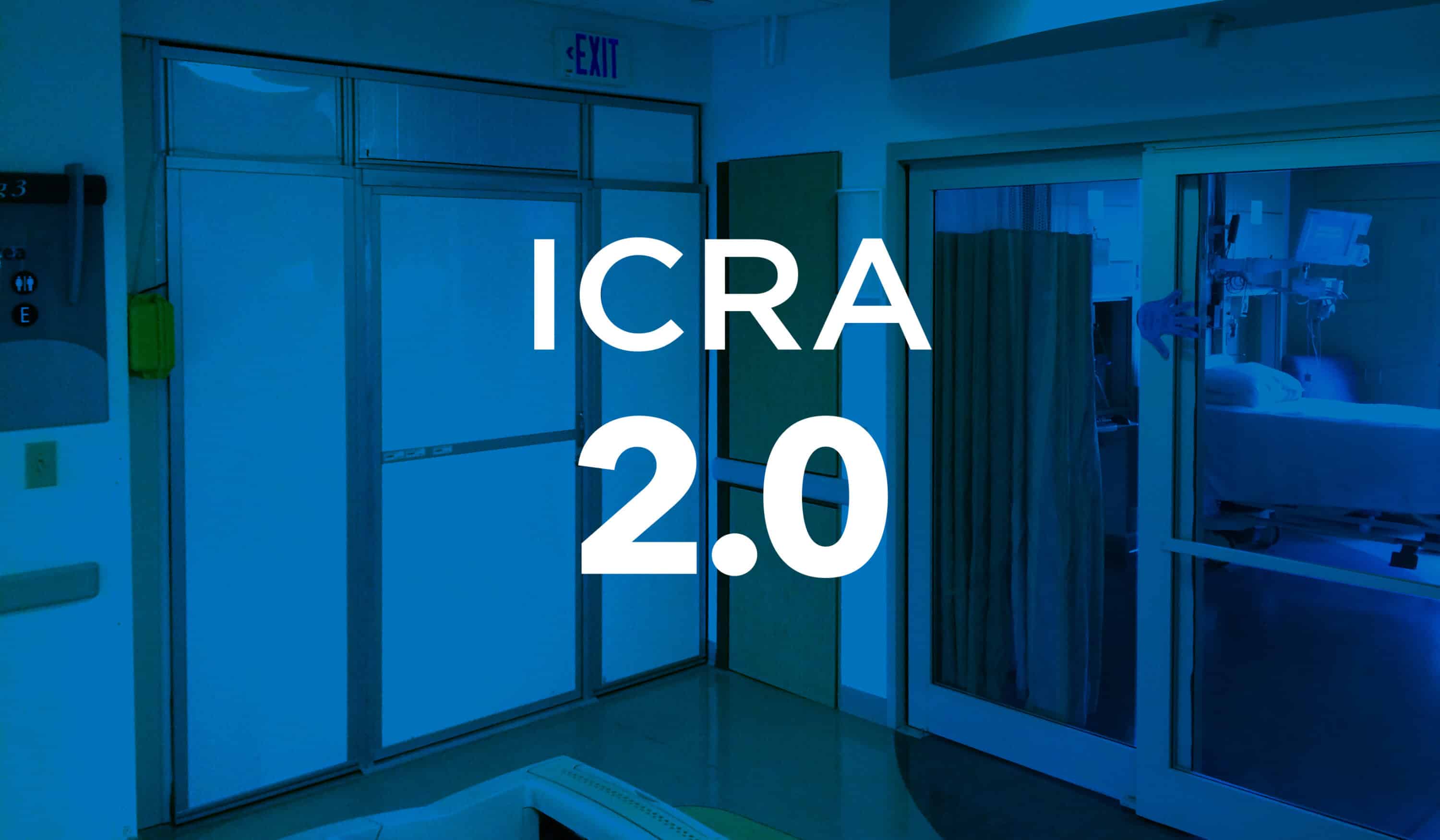
Updated October 25, 2024
The latest ASHE-led changes aimed at improving infection control during healthcare construction—commonly referred to as ICRA 2.0—offer much to consider for those tasked with installing temporary construction walls. During STARC’s recent webinar, ICRA 2.0: Recommendations for Improving Prevention Planning in Healthcare Construction, attendees heard from experts and engaged with many questions.
If you haven’t viewed the webinar yet, be sure to check it out. Meanwhile, here are three key takeaways for anyone using temporary wall systems during a healthcare renovation project.
New and Improved: ICRA 2.0 and Temporary Walls
ICRA 2.0 includes clearer descriptions within the matrix, adding categories for routine maintenance in addition to construction. This change brings more clarity to temporary construction walls, ensuring they align with standard workflows and, potentially, a standardized permit.
For a more detailed overview, see Dr. Janet Haas’ guest blog post on the topic.
IP Involvement
Beyond the numerous changes to the precautions matrix, it’s clear this effort has raised the stakes for infection preventionists. As Improvement Specialist Leon Young alluded to during the webinar, it’s almost as if ASHE wants the IP to be more involved with the ICRA process and mitigation strategies.
“As it stands now, the IP completes the permit, signs it, sends it off, and maybe walks their projects. Set it and forget it, if you will,” Young says. “Now, ASHE wants the IP’s head in the game more. Starting with the permit, where the IP is to physically dictate the mitigation strategies—something already written out on the old permit—and then with the HEPA verification and monitoring. This gets the IP more involved and gets their hands dirty.”
Containment and Isolation with Temporary Walls
Efforts to improve infection control also call for reassessing traditional methods for containing dust, pathogens, and fire risks. STARC’s temporary wall systems enable reliable negative air spaces for healthcare construction containment.
As Bruce Bickford, Vice President of Product Development, pointed out during the webinar, our LiteBarrier™ and RealWall™ temporary walls provide the highest level and reliability of any temporary wall system because they are specifically engineered to reduce or stop airflow across the wall.
Risk assessments for infection control will continue to evolve, but the ICRA 2.0 effort represents a crucial step forward in healthcare facilities management and the use of temporary walls.
No doubt, risk assessments for infection control will continue to evolve, but this ASHE-led ICRA 2.0 effort marks an important step forward for healthcare facilities management.
To watch the uncut recording of our webinar, click here.
To access ASHE’s ICRA 2.0™ Toolkit, click here.
For more information about how STARC’s temporary construction walls can help you achieve ICRA 2.0 compliance, contact us today.
